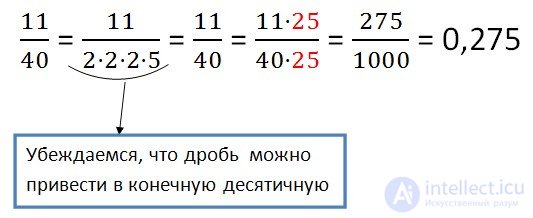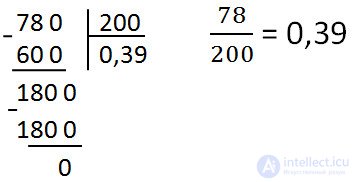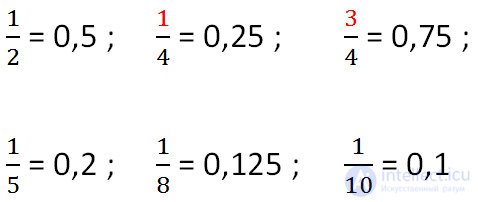Lecture
An ordinary fraction can be converted to a final decimal fraction, if its denominator is decomposed only into factors 2 and 5, which can be repeated.
Examples:

Fraction 11/40 can be converted to the final decimal. Its denominator is factorized by 2 and 5.

Fraction 17/60 cannot be converted to the final decimal fraction, because in its denominator, apart from the factors 2 and 5, there are 3.
We want to remind that the factors 2 and 5 are called simple, that is, they are divided only into themselves and 1.
You can convert ordinary fraction to decimal in several ways.
To turn a fraction into decimal , you need to multiply the numerator and denominator by the same number, so that the denominator is 10, 100, 1000, etc.
Before you start working, do not forget to check whether it is possible to convert this fraction into decimal at all (see the previous page).
Examples:

We are convinced that the fraction can be reduced to the final decimal.
Multiply the numerator and denominator by 5. In the denominator, we get 100.

Another example:

The second method is more complicated, but it is used more often than the first. In order to use it you need to remember the division of the area.
To convert an ordinary fraction to decimal , you need to divide the numerator by the denominator.
Example:

Make sure that the fraction can be translated into the final decimal.
Divide the numerator by the denominator.

Below is a list of fractions with denominators that are most often found in tasks. You make it easier for yourself to work if you just learn them.

Comments
To leave a comment
Arithmetic
Terms: Arithmetic